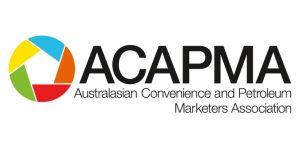Unless you have been hiding under a rock over the past fortnight, you would have noted that national media has been lit up in recent days with commentary about the sharp rise in retail fuel prices in Australia. Much of this commentary is coming from well-informed investment houses and economic commentators who rightly point to global factors driving price volatility and price rises.

But some of it, particularly that coming from the usual suspects and including motoring organisations like the NRMA, is apparently wide of the mark begging the question of whether they just don’t understand fuel pricing? Or whether they do, but just want to grab an opportunistic headline by making sensationalist statements.
Take for example the statements made by the NRMA in the media this week that fuel prices are high because the profit margins of fuel retailers have increased from a pre- Covid-19 average of around 11cpl to more than 18cpl (i.e. commentary provided to Channel 9 News on Wednesday 13 October 2021).
Presumably, the NRMA is using the latest research published by the ACCC in its latest report Fuel Monitoring Report (see https://www.accc.gov.au/publications/quarterly-reports-on-the-australian-petroleum-industry/report-on-the-australian-petroleum-market-june-2021)
Yet the ACCC Report analysis does not support the NRMA commentary at all.
The ACCC report notes that the Gross Indicative Retail Difference – that is the difference between the price at which a service station buys fuel and the price at which it sells this fuel to motorist – has increased slightly from 14.7cpl in 2019-20 to 16.7cpl in 2020-21. This commentary was advanced together with another major finding that Australia’s average petrol prices were the lowest they have been in 22 years when you exclude inflationary effects (i.e. prices in real terms).
Featured prominently on Page 5 of the ACCC report in its discussion of the increase in GIRD, the ACCC states that: “TGPs reflect the wholesale price of petrol only and exclude other retail operating costs (such as freight, the cost to use a particular brand, rent, labour and utility costs). As GIRDs include these costs, they should not be confused with actual retail profits”.
“Notwithstanding the obvious failure to appreciate the difference between GIRD and profit, it doesn’t take much ‘research’ to understand why GIRDS increased over the past year,” said ACAPMA CEO Mark McKenzie.
“It is suggested that the real explanation for the increase in the GIRD is due to fuel retailers amortizing the unchanged operational costs of fuel retailing (i.e. fuel transportation to site, site rents, wages, electricity etc etc) against the dramatically lower volume of fuel sales – meaning the retailer margin must stretch to cover costs before any profit is made.
“Australia has experienced a once in a lifetime economic downturn due to Covid and this event has changed the dynamics of retailing in every industry in Australia – there is no reason to believe that Australia’s retail fuel industry would be any different,” he said.
But setting aside the issue of an apparent misunderstanding of GIRD and profit, the other surprising comment was that the larger fuel retailers are actively ‘manipulating the discount price cycle’ by extending the duration of the Sydney cycle.
This criticism is flawed for two reasons. First, it assumes that a single retailer can singlehandedly influence the shape of the petrol price cycle despite the national retail fuel market comprising over 2000 discrete fuel retail businesses that compete with each other.
While it is true that some bigger business can cause a market reaction in some capital city markets by moving first to end a cycle, it is nonsense to suggest that any fuel retail business can actually manipulate the price cycle of any Australian capital city or regional fuel market.
“The more likely explanation, noting that the longer-than-usual discount cycles occurred almost entirely during the period of the NSW lockdown, is that the demand destruction caused by the lockdown has meant the fuel retailers have discounted fuel for longer in their quest to maintain reasonable fuel volumes in the face of continued strong competition – and that fuel deliveries were lasting longer affording a longer window for fuel price discounting,” Mark said.
This observation brings us to the second flaw in the NRMA’s commentary on the changes in the NSW Price Discount Cycle.
The NRMA’s criticism suggests that an extended price discount cycle is a bad thing from a consumer perspective.
How could this actually be so?
Notably, the NRMA statements of this week provided little discussion of the upward pressure on retail prices created by the 400% increase in finished fuel prices delivered to Australia since April 2020 or the 10cpl in average TGP over the past four weeks – two readily accessible facts that more informed commentators cited in their discussion of current increases in fuel prices.
“Put simply, the NRMA commentary on petrol prices this week is not supported by any objective analysis of the facts begging the question as to whether their erroneous commentary was due to misunderstanding or simple mischief,” Mark concluded.
Published with permission from ACAPMA.
Source: https://acapmag.com.au/2021/10/fuel-price-misunderstanding-or-mischief/





